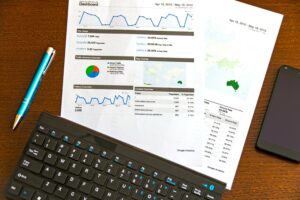The sales cycle refers to the series of stages and steps that a potential customer goes through before making a purchase decision. It represents the entire journey from the initial contact with a prospect to closing the sale and often includes activities such as prospecting, qualifying, presenting, overcoming objections, and closing deals. Understanding the sales cycle helps sales teams tailor their approach to the needs and behaviors of customers at different stages, ultimately improving the efficiency and effectiveness of the sales process.
Understanding the sales cycle is essential for effective sales strategy development and execution. By recognizing the stages that prospects go through before making a purchase decision, sales teams can tailor their approach, address prospect needs, and guide them through the journey more effectively. This results in improved conversion rates, increased customer satisfaction, and ultimately, higher revenue generation.
Key Stages:
- Prospecting: Identifying and researching potential customers who may have an interest in the product or service.
- Qualifying: Assessing the potential customer’s needs, budget, authority, and timeline to determine if they are a good fit.
- Presenting: Demonstrating the value of the product or service through presentations, demos, or discussions.
- Handling Objections: Addressing any concerns or objections that the potential customer may have.
- Closing: Finalizing the sale through negotiation, agreement, and signing of contracts.
- Follow-Up: Ensuring customer satisfaction and seeking opportunities for upselling or referrals.
Benefits:
- Improved Targeting: Helps in focusing efforts on high-potential prospects and leads.
- Enhanced Efficiency: Streamlines the sales process by providing a clear framework for sales activities.
- Increased Conversion Rates: Facilitates the movement of prospects through the sales funnel, resulting in higher conversion rates.
- Better Customer Understanding: Allows sales teams to understand and respond to customer needs at each stage.
- Higher Revenue Generation: Leads to more effective sales efforts, resulting in increased sales and revenue.
Overall, the sales cycle is a critical framework for guiding potential customers from initial contact to purchase. By understanding and optimizing each stage, sales teams can enhance their effectiveness, improve customer satisfaction, and drive business growth.
« Back to Glossary Index



